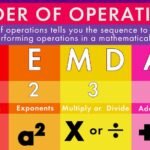Arithmetic Operations are found in every aspect of our lives. Arithmetic is a branch of mathematics that deals with numbers and basic operations on numbers. The word arithmetic comes from the ancient Greek word ‘Arithmos’, meaning numbers.
People cannot continue their lives without using Arithmetic Operations. In our daily lives, we perform basic operations such as addition, subtraction, multiplication and division with arithmetic.
Arithmetic Operations
Basic Arithmetic Operations are the mathematical operations that involve basic calculations and are basic to mathematical calculations. We can’t imagine the Mathematical Calculation whether beginner or advanced without knowledge of Basic Arithmetic Operations. The basic arithmetic operations include the following:
- Addition
- Subtraction
- Multiplication
- Division
All these Arithmetic Operations are performed with Numbers and we know that digits form the numbers. Hence, these arithmetic operations are performed at the level of digits. Let’s learn about them in detail.
Addition in Maths
Addition refers to the totalling of numbers. In addition, we sum up all the numbers that we have. The result of addition is greater than the numbers which are added. Addition is represented by the plus (+) symbol.
In the illustration attached below, there was one bird sitting on the branch of a tree. Two more birds came and sat on the same branch. Thus the total number of birds sitting on the branch will be a sum of 1 and 2 which is equal to 3.
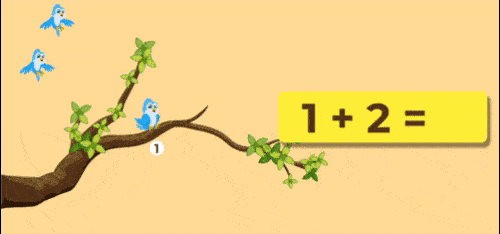
Addition is quite helpful in totaling up your bill, and counting the number of articles you have. While counting the numbers from 1, 2, 3, ….. and so on, the next number is obtained by adding 1 to the previous number. Thus every next number is called the successor of the previous number. For Example, 4 is obtained by adding 1 to 3 hence, 4 is successor of 3.
Subtraction in Maths
Subtraction is the method of finding difference between two numbers. Subtraction is opposite of addition. Subtraction is represented by minus (-) symbol.
In the illustration attached below, there are 8 slices of pizza. Three slices are taken away thus we are left with 5 slices of pizza only.
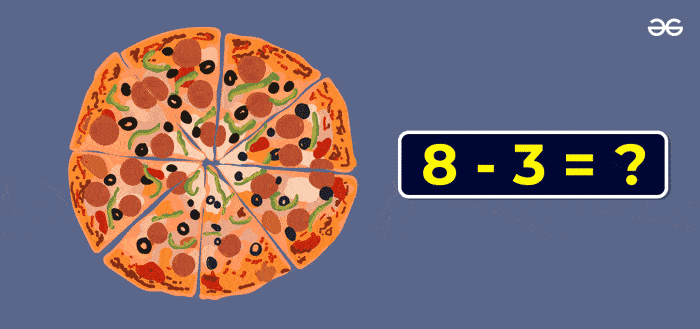
Subtraction is useful in finding how much a number is larger or smaller than a given number. Subtrcation in Arithmetic is used in calculation of remaining amount or the money you have left with you after you spend some on purchasing goods.
In counting we can obtain previous number by subtracting 1 from the next number. The previous number is called predecessor of next number. For Example, we can get 3 by subtracting 1 from 4 i.e. 4 – 1 = 3. Hence, 3 is called predecessor of 4.
Multiplication in Maths
Multiplication is performed when we need to add same numbers for large number of times. Multiplication is represented by cross (⨯) symbol. Multiplication makes the counting easy in arithmetic.
In the illustration attached below, there is a layer of three bricks. Now three layers of bricks each containing three bricks stack up making up total 3 ⨯ 3 = 9 bricks. Now three walls of 9 bricks stack up side by side thus total making up a block of 27 bricks.
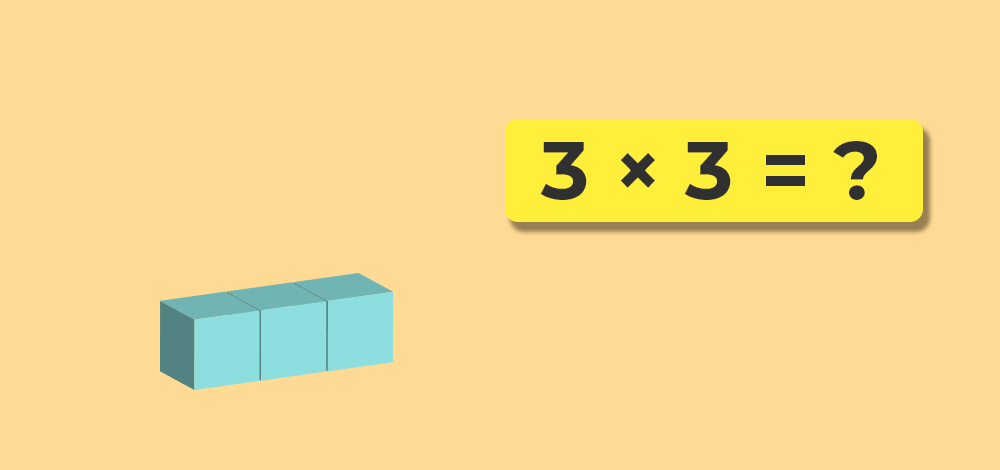
When we multiply two numbers the result is called the product of two numbers. Instead of performing lengthy sum we simply multiply. To make multiplication easier we need to learn the multiplication tables of different numbers.
Division in Maths
Division is the method of distribution and finding the share of each person. Division is opposite of multiplication. Division is represented by the symbol (÷).
We generally divide a larger number by a smaller number. The number which is divided is called dividend and the number which divides the dividend is called divisor.
In the image attached below there are six chocolates which are divided in group of two, hence 6 divided by 2 is 3. Therefore, the chocolate can be divided among 3 persons.
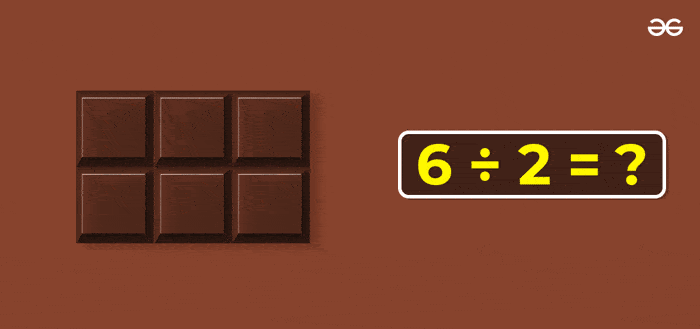
Applications of Arithmetic
Arithmetic is used in various of applications such as totalling of numbers, subtraction of numbers, multiplication of numbers and division of numbers. Apart from these four operations, arithmetic is also used in finding average and writing numbers in progression.
- Arithmetic Mean
- Arithmetic Progression
Let’s learn them in brief.
Arithmetic Mean
Arithmetic Mean is obtained by adding all the given values and dividing the sum by the number of values. Arithmetic Mean is also called average. It is useful in finding single approximate value for given set of data. Let’s understand it through an example.
Example: The age of 5 friends are 11 years, 11 years, 12 years, 13 years and 13 years. Find their average age.
Average Age = (11 + 11 + 12 + 13 + 13) = 60/5 = 12years
Hence, approximately each friend is near to 12 years.
Arithmetic Progression
A sequence of numbers where every next number difference by the previous number by a constant or fixed value is called Arithmetic Progression.
The arithmetic progression is represented commonly as,
a, a+d, a+2d, a+3d, ………., a+(n-1)d
where,
- a is First Term of Arithmetic Sequence
- d is Common Difference of Arithmetic Sequence
- n is Number of Terms in Arithmetic Sequence
For Example, 3, 6, 9, 12 are in arithmetic progression as every succeeding number differs from the previous number by 3.
Example: Write the next number of the sequence 8, 12, 16, 20.
In the progression 8, 12, 16, 20 the common difference is 4.
Next term of Arithmetic Progression is = 20 + 4 = 24
Arithmetic Examples
Example 1: If you spent 20 dollars on copy, 10 dollars on pen and 5 dollars on pencil then what is the total amount you spent?
Solution:
- Money Spent on Copy = 20 dollars
- Money Spent on Pen = 10 dollars
- Money Spent on Pencil = 5 dollars
Total Money Spent = (20 + 10 + 5) dollars = 35 dollars
Example 2: If your total bill is 35 dollars and you give 50 dollars note to the shopkeeper what amount you will get back?
Solution:
- Total Bill = 35 dollars
- Total Money given = 50 dollars
Money Returned by the shopkeeper = 50 – 35 = 15 dollars.
Example 3: If each chocolate cost 3 dollars then what is the cost of 10 such choloates?
Solution:
- Cost of each chocolate = 3 dollars
- Total number of chocolates = 10
Therefore cost of 10 such chocolates = 3 ⨯ 10 = 30 dollars
Example 4: If 5 pens are bought for 40 dollars then what is the cost of each pen?
Solution:
- Total Cost of pens = 40 dollars
- Total number of pens purchased = 5
Hence, the cost of each pen = 40 ÷ 5 = 8 dollars


